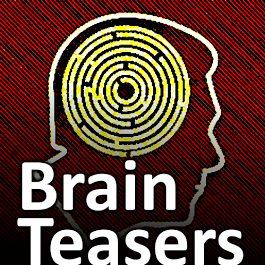
|
Monthly Archive - September 2015 (page 3)brain teasers, puzzles, riddles, mathematical problems, mastermind, cinemania... These are the tasks listed 21 to 30. |
Which is a winning combination of digits?
 The computer chose a secret code (sequence of 4 digits from 1 to 6). Your goal is to find that code. Black circles indicate the number of hits on the right spot. White circles indicate the number of hits on the wrong spot.
The computer chose a secret code (sequence of 4 digits from 1 to 6). Your goal is to find that code. Black circles indicate the number of hits on the right spot. White circles indicate the number of hits on the wrong spot. Correct answers: 61
The first user who solved this task is James Lillard.
#brainteasers #mastermind
Calculate the number 9809
 NUMBERMANIA: Calculate the number 9809 using numbers [7, 6, 2, 6, 21, 745] and basic arithmetic operations (+, -, *, /). Each of the numbers can be used only once.
NUMBERMANIA: Calculate the number 9809 using numbers [7, 6, 2, 6, 21, 745] and basic arithmetic operations (+, -, *, /). Each of the numbers can be used only once. Correct answers: 29
The first user who solved this task is Sanja Šabović.
#brainteasers #math #numbermania
